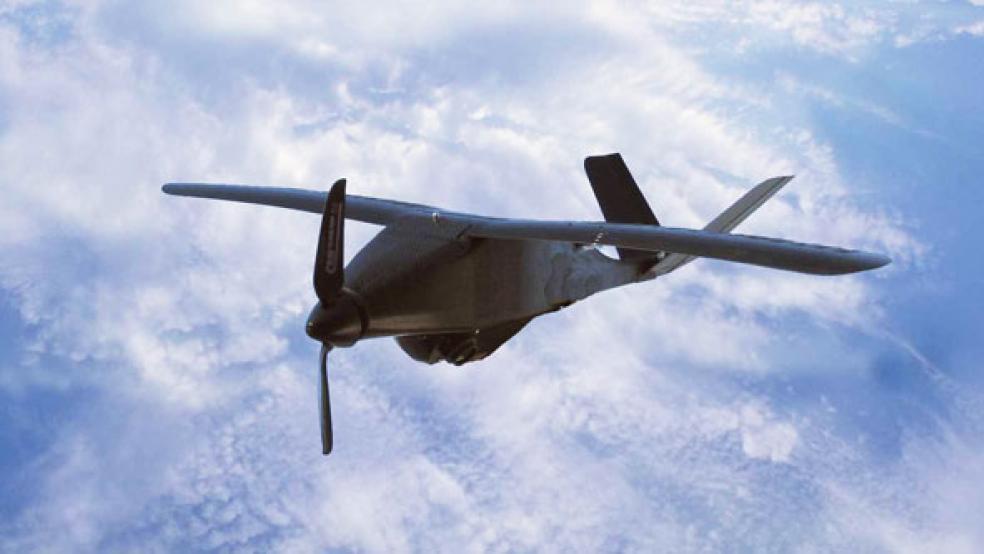No tool of war has come further in the last 25 years than drones, or unmanned aerial vehicles (UAVs). And no program has come under greater scrutiny, or for more reasons.
The CIA and Pentagon are reportedly at odds over who should control armed UAVs that kill targets. UAV manufacturers are pushing for Federal Aviation Administration approval to fly unmanned aircraft in national airspace, as a U.S. Airways pilot claims one nearly collided with him in the air over Florida in March.
The Obama administration's use of drones to attack terrorist targets has drawn scrutiny from those who point out that those same attacks sometimes kill civilians. In the United States itself, some people seem opposed to UAVs almost on principle alone.
Related: Gunning for Drones - Colorado Town Sets Its Sights High
However, the Defense Department has increased its budget for buying drones, and it's adding money to research and develop new ones. For a look at what's next for UAVs, a good place to start is some of the leading firms creating drones, and taking the challenges they pose head-on.
UAVs are "a mainstay," said Ryan Hartman, senior vice presidents of Programs at Insitu, owned by Boeing.Over the next 25 years, he said, "Technology will have evolved to the point where we'll be operating unmanned systems in the national airspace safely and responsibly." Hartman spoke to CNBC at a special Insitu airfield located among wind power farms in eastern Oregon. There, his team demonstrated the launch and recovery of a 45-pound ScanEagle UAV that launches from a catapult and can fly 24 hours on less than a gallon of fuel.
Business Model
The ScanEagle has flown 800,000 hours since being introduced 10 years ago, much of that time carrying out surveillance in Iraq and Afghanistan. This month, Boeing sent U.S. Marines in Afghanistan their first Blackjack, a larger version of the ScanEagle that can carry more surveillance equipment.
Insitu has a unique business model compared with rivals. Rather than selling systems to customers, it leases them out, and it also provides the operators. Some of the company's earliest employees worked side-by-side with Marines in Afghanistan.
Related: Death by Drones - Are They Worth the Cost?
By leasing the equipment, Boeing retains ownership, so that once a ScanEagle is no longer needed, it can be refurbished and leased to the next customer. In fact, four ScanEagles used in Afghanistan have now been repurposed for ConocoPhillips, which uses them to track mammal migration and ice floes in Alaska under a restricted FAA license.
'Skunk Works'
Much of the work on next-generation UAVs is happening inside Lockheed Martin's legendary Skunk Works, where legendary spy planes the SR-71and the U-2 were created. CNBC was allowed a rare peak inside the secretive facility in Palmdale, California.
The company worries that without some big contract wins, funding for the R&D work done there could dry up. So it's trying to find customers outside the military. "We see a whole commercial side to this as well," said Kevin Lewelling, manager of the Skunk Works' Rapid Operations Programs. Lewelling stood in a room with a mock-up of the UCLASS, a highly competitive Navy contract that would put a UAV on an aircraft carrier.
He also talked about the Stalker, a very lightweight UAV that an individual person can launch with a bungee cord, and which can fly eight hours on a propane fuel cell. "Let's say you want to go look at power lines, or oil lines, infrastructure...this is going to be an airplane that's going to be used for many, many different things," he said.
Related: Obama's Use of Drones in Iraq Gives Al Qaeda the Edge
The Skunk Works is working on several other programs as well.
- Open-architecture, single-operating system for several different pieces of equipment
- Cyberprotection, both defensive and offensive
- Advanced materials for aircraft, including not just composite, but also new metallic structures
- Increased stealth, including plans someday for an SR-72, as hypersonic speeds could reach Mach 15 to 20.
But the UAVs are a high priority, and none higher than the Navy's UCLASS competition. However, Congress is threatening to suspend funding the UCLASS, however, as some on Capitol Hill balk at costs. Funding will remain a constant challenge for UAVs, but it's not the only one. Over the next quarter century, UAVs will need to become more efficient to operate. Currently, it's one-man-to-one-machine, meaning each aircraft requires the constant attention of one person. That ratio has to improve.
"We're there now," said Insitu's Ryan Hartman. His company is testing a version of the Blackjack that will let one operator control four UAVs at once. Also, teaming UAVs with pilots to fly "manned-unmanned" is a program being tested with the P-8 Poseidon and V-22 Osprey.
The industry is also dealing with how to use UAVs for lethal purposes. Arming drones will continue, experts say. The question is how much autonomy these unmanned aircraft will be given. Could they ever decide on their own to kill?
"There are some decisions that humans make that make the doctrine of war work," said Hartman, "and so I think that's a very low probability." He and others believe that despite backlash and concerns, UAVs have proven themselves too valuable to dismiss. There very well could be more unmanned than manned military aircraft in 25 years, and that's not even counting the potential for building them to fly across the U.S.
"The weakness has really been the reliability of the systems themselves," Hartman admitted. "Everybody in the unmanned systems industry recognizes the importance that reliability is what will enable us to provide capability in the civilian market and operate in the national airspace."
This article originally appeared in CNBC.
Read more at CNBC:
A 21st century collision course in space
Jet fighter that can do it all - maybe
Famous products back from the dead




